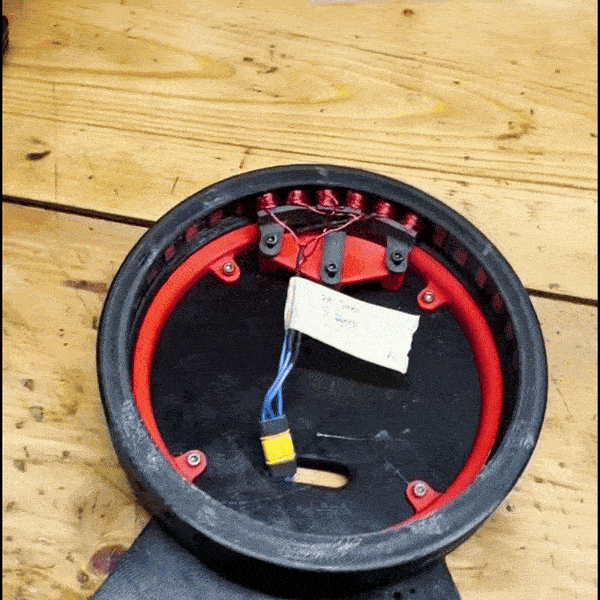Hello FigureAI
Thank you for taking the time to look at my application.
I have the perfect skill set to be an amazing Motor Test Intern before starting graduate school this Fall and I want to prove it to you on this webpage.
I know you have limited time so I will keep this brief:
I know how to build brushless DC motors from scratch!
I am working on a personal project where a friend and I are 3D printing a BLDC motor with a partially complete stator to make our motor uniquely lightweight, yet functional.
I have surveyed and uncovered what materials are best for the rotor and the stator. I understand the governing differential equations of BLDC motors and use them to model torque simulations with pyFEMM and find optimal stator-rotor combinations. I also understand intuitively the core components of motor design such as back irons, Halbach arrays, winding factor, slot-pole ratios, and more!
I can automate hardware tests and collect/analyze vast amounts of data
When I worked at Amazon Robotics, I ran automated conveyor tests to determine which conveyor parameters would lead to the fastest tote delivery time within a consistent range of stopping positions. I coordinated with vendors, wrote PLC programs, and calibrated my test setup to measure tote positions accurately for days on end. I also wrote Python scripts to parse hundreds of thousands of data points, find the most relevant data, and report the effective stopping positions.
I answered one of my team’s challenging questions by analyzing the data with ANOVAs and linear regressions, clearly and thoroughly documenting my steps along the way. Because of my work, conveyors are optimized for tote delivery, and people use my findings and automated test setup to assess more conveyor parameters and further enhance company productivity.
I have used FEA and ANSYS simulations to justify system-wide decisions
When working at Desktop Metal, I used FEA to justify the strength of my aluminum retrofit parts to bring system-wide functionality back to the company’s production line of metal 3D printers. I also used the same approach when justifying the strength of my arm clamp assemblies for a lightweight indoor research drone I built from scratch for Northeastern’s drone research club (NUAV).
Additionally, I used ANSYS fluent to find optimal nosecone shapes for our senior capstone project - an autonomous invasive-plant-detecting catamaran. I’ve also used MATLAB to simulate differential/partial differential equations using RK2, implicit/explicit, and Crank-Nicholson methods, as part of my Intro to Computational Fluid Dynamics class.
In short, I am an up-and-coming M.S. in Robotics student who loves building automated test setups, collecting data, and finding the most optimal electromechanical designs. I’ve already completed motor tests, developed strong test flows, automated data collection, processing, & analysis with Python, used FEA models to simulate motors, and have written concise reports that people easily understand and use to enhance company-wide productivity. That’s not to mention my time leading Northeastern University’s drone research club, working across multi-disciplinary teams, and understanding/implementing system-wide goals.
I check off all the boxes, and if you accept me as an intern, you will have an engineer with a relentless drive to uncover the most optimal motor designs, which will make Figure 02 (and the upcoming Figure 03) harder, better, faster, stronger.
I look forward to hearing back soon and talking to you about my projects.
Kindest Regards,
Daniel T. Simpson






